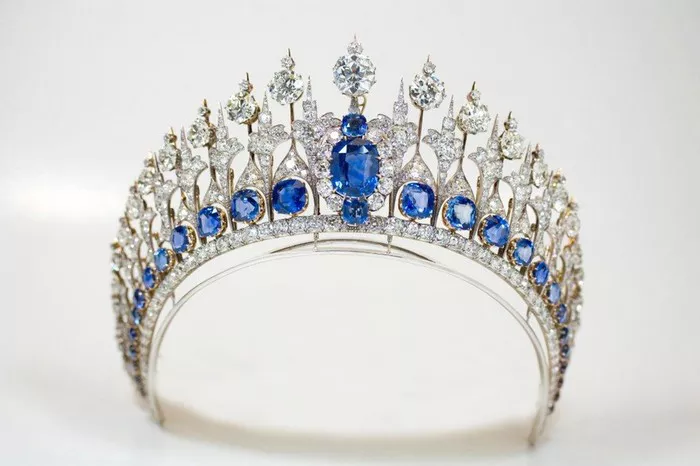In the realm of gemstones, the interplay of color, clarity, cut, and carat weight determines the value and overall appeal of a gem. Among the myriad of colors and shapes, pear-shaped yellow sapphires occupy a unique niche, combining elegance in form with a warm, inviting hue. Understanding how color affects the value of these gemstones is crucial for jewelry appraisers, collectors, and enthusiasts alike. This guide aims to provide a detailed and accessible introduction to the intricacies of color in pear-shaped yellow sapphires, suitable for a popular science audience.
The Significance of Color in Gemstone Evaluation
Color is one of the most critical factors in determining the value of a gemstone. In the case of sapphires, the color intensity, saturation, and hue play a pivotal role in establishing its quality and, consequently, its market price. Yellow sapphires, specifically, are valued for their warm, golden tones that can range from pale yellow to vivid, almost orange-tinged hues. The color of a sapphire is influenced by trace elements present in the mineral corundum during its formation, such as iron, titanium, and chromium.
Color Grading in Yellow Sapphires
To accurately assess the value of a pear-shaped yellow sapphire, gemologists employ a standardized color grading system. This system typically considers three primary aspects: hue, saturation, and tone.
Hue
Hue refers to the specific color of the gemstone, distinguishing it from other colors within the same gemstone family. In yellow sapphires, the ideal hue is a pure, warm yellow with no significant deviations towards green or orange. A pure yellow hue is highly sought after and tends to command a higher price.
Saturation
Saturation measures the intensity or richness of the color. A highly saturated yellow sapphire will display a vibrant, deep yellow color, while a less saturated gemstone will appear more muted or pastel. Generally, the more saturated the color, the higher the value of the sapphire.
Tone
Tone refers to the lightness or darkness of the color. In yellow sapphires, a medium tone is often considered most desirable, as it balances the vibrancy of the color with a pleasant visual effect. Too light a tone can result in a washed-out appearance, while too dark a tone can make the gemstone look dull or overly intense.
The Influence of Color on Clarity and Cut
While color is a primary determinant of value, it also interacts with other factors such as clarity and cut to influence the overall appearance and desirability of a pear-shaped yellow sapphire.
Clarity
Clarity refers to the internal characteristics of the gemstone, including inclusions, fractures, and other imperfections. In yellow sapphires, clarity can affect the color perception, as inclusions can sometimes cast shadows or disrupt the flow of color. However, some collectors prefer sapphires with unique internal patterns, believing they add character and individuality to the gemstone.
Cut
The cut of a pear-shaped yellow sapphire is crucial in maximizing its brilliance and showcasing its color. A well-cut gemstone will have precise proportions and facets that direct light in a way that enhances the color and clarity. A poorly cut sapphire, on the other hand, can appear dull or washed out, regardless of its color intensity.
Market Trends and Color Preferences
The value of pear-shaped yellow sapphires is also influenced by market trends and consumer preferences. Over time, fashion and cultural shifts can alter the demand for specific colors and shapes. For example, a vibrant yellow sapphire may be highly valued during periods when bold, statement jewelry is in fashion, while a more muted tone may be preferred in times of subtle, elegant designs.
Evaluating Color in Appraisal
When appraising a pear-shaped yellow sapphire, gemologists use specialized tools and techniques to assess the color accurately. These include colorimeters, which measure the hue, saturation, and tone objectively, and visual comparison with standard color charts. Appraisers also consider the overall quality of the gemstone, including clarity, cut, and carat weight, to provide a comprehensive valuation.
Conclusion
In summary, the color of a pear-shaped yellow sapphire is a multifaceted aspect that significantly impacts its value. By understanding the nuances of hue, saturation, and tone, as well as their interaction with clarity and cut, gemologists and collectors can appreciate the complexity and beauty of these gemstones. As market trends and consumer preferences evolve, the value of yellow sapphires may fluctuate, but their enduring appeal as a symbol of warmth, elegance, and rarity remains constant. Whether worn as a stunning piece of jewelry or cherished as a part of a collection, pear-shaped yellow sapphires continue to captivate and inspire those who appreciate the wonders of the natural world.
Related topic:
- How Many Carats Should Yellow Sapphires Wear?
- Yellow Sapphire Loose Stone: How to Choose High-Quality Stones?
- Yellow Sapphire Rosary Beads: What Are Their Special Religious Meanings?


